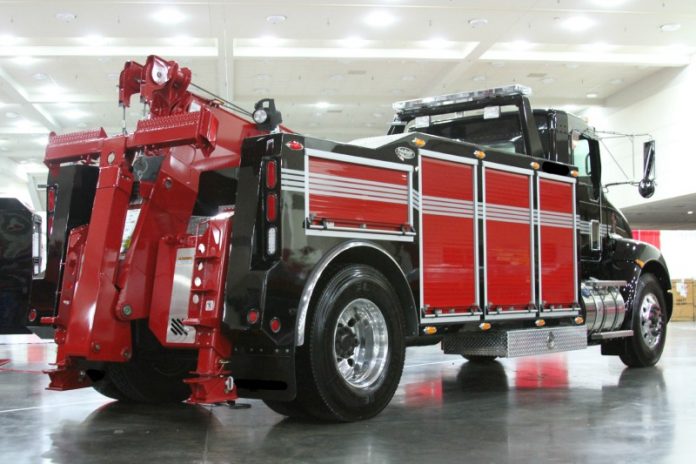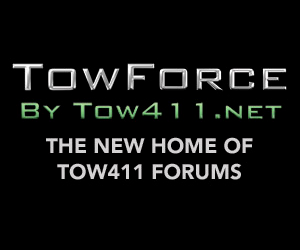I don’t think there is a stronger case for today’s existence of manufacturing in America than the towing industry. North American manufacturing would be broken down without the presence of the towing industry constantly changing for the better with new technology and products. Oh, but those of you will say we evolved from the European theater incorporating their under reach and crane apparatus. Don’t get fouled! Just because your last name starts with Mac or ends in a vowel doesn’t mean you were bornover there either. Good Ole’ USA manufacturing is alive using the latest in towing ingenuity at a continuum throughout America every day in places like Chattanooga, Norfolk, Greencastle, Deer Park, Bean Station and of course, North Andover, MA. I will give one shout out to our upper North American neighbors who share our industry’s passion. Buffalo towers would be hard pressed without the flow of their precious resource into our country.
Let’s take a closer look at the newest innovative product for the tow truck industry, the PolyBody™. To get a closer view, you’ll notice a familiar flag flying outside the headquarters of United Plastic Fabricating in North Andover, MA. The American flag is proudly waved at all three UPF manufacturing facilities located here in the United States. United Plastic Fabricating is the first manufacturer andinnovator of the trade marked PolyBody™ made of polypropylene, which is a light weight, durable and tough hard plastic that does not create stress cracking characteristics, is semi-rigid, and has good fatigue resistance. This product was engineered and is manufactured for the towing industry right here in theUSA. Let’s take a look at is origins and evolution from the fire and rescue segments into the towing industry.
United Plastic Fabricating is known for revolutionizing the fire service with over 80,000 polypropylene tanks (POLY-TANK®) designed and installed since 1986 replacing metal tanks, and now produces this same high impact copolymer polypropylene for a complete line of long life polypropylene service, line and wrecker bodies.
Historically, water and foam tanks for fire apparatus were manufactured primarily from steel or fiberglass, which were heavy and prone to cracking. In 1982, the first polypropylene water tank was conceived, designed and built through the efforts of a Lynnfield, Massachusetts, Fire Department technician to replace a rusted steel tank in his department. Word of this successful concept spread quickly and other local Fire Departments sought a polypropylene replacement.
By December 1986, the demand for this new tank material reached the point where the Lynnfield technician and a fellow fire fighter decided to be co-founders of the world’s first polypropylene fire tank business. The new company, United Plastic Fabricating, Inc. (UPF), opened their doors in North Andover, Massachusetts, in a 6,400-square-foot facility. Sales grew quickly and within a year’s period of time, UPF moved to a 10,000-square-foot facility. UPF expanded operations to Florida in 1989 and to Wisconsin in1991. With continued growth, UPF Massachusetts moved into a new 38,000-square-foot corporate headquarters in 1992, which includes a design and engineering center. In 2005, UPF Wisconsin moved to a 103,000-square-foot facility, and, last year, UPF Florida moved to a 78,030-square-foot facility. Today, UPF has 219,030 square feet of facilities and employees 235 people on its team.
In its 28 years, UPF’s sales has surpassed steel tanks to become the best-selling water and foam tanks in the industry, while trade-marking the name, Poly-Tank®. UPF’s lifetime warranty, the most complete warranty in the industry, makes the Poly-Tank® the last tank you’ll ever need. There are currently over 80,000 Poly-Tank® operational in 85 countries throughout the world. All of these tanks were made herein the U.S.
The PolyBody™ is a plastic body made from UPF’s PT3™ 1/2” thick Ultra High Impact Copolymer Polypropylene. The PolyBody™ provides an alternative to the steel service body materials that rust and corrode, and to the cracking problems associated with fiberglass. This true long-life body will provide an outstanding appearance year after year and chassis after chassis. In addition, The PolyBody™ offers lighter weight than conventional steel or fiberglass bodies, thereby allowing for increased payload orimproved fuel economy. UPF’s PT3™ polypropylene is so strong it can withstand the impact of a sledgehammer. Try that on a steel or fiberglass body!
“From my years in the fire service, I was aware of the UPF POLY-TANK®. In fact, I encouraged my fire company to invest in a truck with a UPF tank. Shortly after getting the vehicle, however, it was in anaccident and rolled twice. The chassis was totaled, but the UPF tank barely had a mark. This stuff is so strong, but it’s also lightweight, corrosion resistant and has a longer warranty. I knew this poly material is what I wanted my new wrecker body made of,” says Mark Sexton, Owner of Mark’s Equipment Service, Inc.
PolyBody® inherent features and advantages:
- Corrosion and Rust Proof
- Resists dents and dings
- Maintenance free
- Lighter weight Improves Fuel Economy
- Custom Configurations
- Automotive painted finish
- Dry compartments
- Increased storage capacity
- Durable with long life capability
- Reduces compartment noise
- Roll-up or flush doors
The PolyBody® Wrecker body can be specified as a new or as a replacement wrecker body. UPF started manufacturing PolyBody® units as secondary styles for new wrecker OEM’s. We have since enhanced our product line to specialize in replacing Heavy Duty wrecker bodies from a 16 ton to a 75 ton rotator. These bodies can be bought as side packs and mounted to existing sub frames and are measured specifically for your replacement. UPF can supply the body only which allows you or your outfitter tocustomize lighting, chrome rails and paint. We have seen the evolution of towing bodies migrating from steel bodies in the 80s to aluminum bodies in the 90s and into composite type bodies in the 2000s. Common problems with steel bodies were corrosion leading to rust, which could start with doors, fender walls or covered areas due to settling interior water. It’s not just the snow belts who experience these issues. The United States is covered by shoreline and salt water loves to eat metal. Once it starts on your wrecker body, it finds a home until you can see through it. Aluminum bodies look great for the first 3 years when the wear and tear of everyday use starts to break down aesthetics. Throwing chains and lumbar in and out of wrecker tool boxes causes cosmetic damage and forces you to weld reinforces every few years. If today’s highways were smooth, you probably wouldn’t have an issue pounding 50,000 to 85,000 lbs. of machine up and down them every day like every other truck on the road does. Think of that long straight weld stretching 150 -250” or more twisting and turning every day. Metal has memory, so it’s only a matter of time before a stress crack appears. Now, let’s add another 80,000 lb. casualty to your load and try to avoid the potholes of our roadway infrastructure. You can’t. So, your truck and the body on it are taking a beating. So along came composite bodies. Great for corrosion resistance and are resin panels are glued not welded but they are heavy and don’t have the ability to change styles since the panels and doors are built from a pre-set mold.
So, today’s choice is yours; spend your winter windfall replacing your fleet or reevaluate your total cost of ownership with a PolyBody® replacement where your return on investment keeps more money in your pocket today.
We can still enjoy our traditional Wednesday spaghetti dinners, St. Paddy’s day corned beef, and New Year’s Eve fried rice, but I still find my favorite beer brewed and bottled in Boston! For more information, call Patrick Cahill, Director of Sales and Business Development at UPF, at 978-989-0264 or email pcahill@unitedplastic.com.







